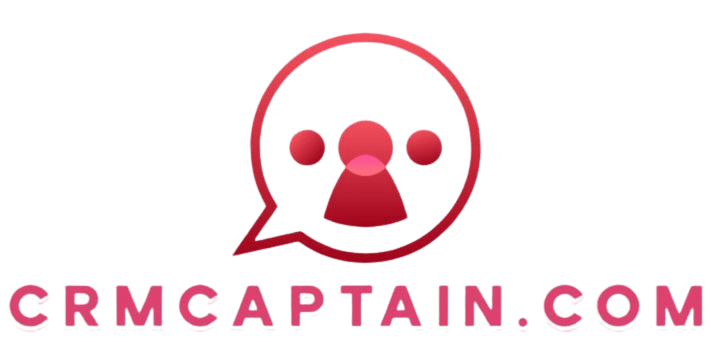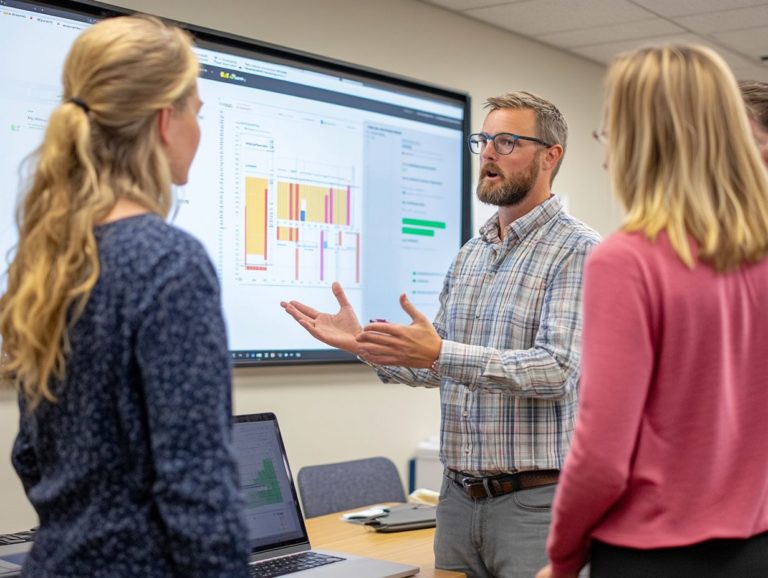Preparing for CRM Go-Live: Key Steps
Getting your CRM system live is an exciting journey filled with critical steps that can make all the difference! However, the journey to a successful CRM Go-Live involves essential actions that can profoundly influence the overall experience.
From articulating clear objectives to ensuring user adoption post-launch, each phase demands careful planning and execution. This article outlines the essential steps to prepare for a seamless CRM Go-Live and emphasizes key focus areas for achieving lasting success afterward.
Contents
- Key Takeaways:
- Key Steps for Preparing for CRM Go-Live
- Post Go-Live Considerations
- Frequently Asked Questions
- What are the key steps to prepare for a CRM go-live?
- How do I create a project plan for a CRM go-live?
- What is the importance of testing before a CRM go-live?
- How should I train end-users for a CRM go-live?
- What is the best way to prepare data for migration before a CRM go-live?
- Why is it important to have a communication plan for a CRM go-live?
Key Takeaways:

Set clear objectives for your CRM Go-Live to pave your way to success.
Thoroughly assess current processes and systems to identify potential issues and areas for improvement.
Provide comprehensive training for key stakeholders to ensure a smooth transition and effective utilization of the CRM system.
Understanding CRM Go-Live
CRM Go-Live represents a pivotal moment in deploying your customer relationship management systems, such as Dynamics 365. This is where your project team maneuvers the solution from the testing phase into the production environment, following thorough evaluations and preparations.
It’s crucial to confirm that the system is ready for operational support and meets your organization’s expectations and requirements. This milestone marks the end of extensive development and rigorous testing while highlighting the importance of user acceptance testing (UAT) in validating the system’s functionality and user interface.
Effective change management strategies are essential, as they ensure smooth transitions and foster user engagement throughout this transformative phase. Leveraging guidance from Microsoft FastTrack enhances your implementation experience, ensuring best practices are adhered to and increasing the likelihood of project success.
By proactively addressing potential challenges and preparing your users for the new system, you can seamlessly integrate the CRM solution into your daily operations, transforming the Go-Live into a celebration of achievement rather than a source of chaos.
Key Steps for Preparing for CRM Go-Live
Preparing for your CRM Go-Live entails a series of essential steps designed to ensure your project team is fully equipped for a seamless transition from the testing environment (sandbox) to the production deployment of Dynamics 365.
This meticulous approach not only facilitates a smooth experience for all stakeholders involved but also sets the stage for success in your implementation journey.
1. Defining Objectives and Goals
Defining clear objectives and goals is a crucial foundational step for you and your project team involved in the CRM Go-Live. This process sets the direction for a successful implementation and ensures that all efforts align seamlessly with your organization’s vision and business processes.
Establishing measurable objectives will help you maintain alignment with key stakeholders’ expectations and governance policies, ultimately leading to a more streamlined process.
By integrating approved licenses and compliance mandates into the planning phase, you can proactively mitigate potential risks and foster accountability within your team.
This alignment enhances resource allocation and enables you to monitor progress against defined success factors, allowing for timely adjustments when necessary. In essence, a well-defined objective framework becomes the solid foundation upon which your successful CRM strategy will thrive.
Are you ready to transform your organization with a powerful CRM? Start your journey today!
2. Assessing Current Processes and Systems

Assessing your current processes and systems is crucial to ensure that the new CRM solution seamlessly integrates with your existing business operations. It must meet the needs of all users involved.
To embark on this journey, start by mapping out your workflows. Identify any external dependencies that could impact the transition. This proactive strategy allows for a thorough evaluation of your current systems, helping you pinpoint gaps that may need addressing.
Once you’ve noted these discrepancies, planning for data migration becomes essential. Data migration involves transferring existing data to the new CRM system. You’ll need to strategically decide which data sets are critical and how they should be transferred without disrupting ongoing operations.
Don t skip thorough integration testing it’s your best bet for a smooth launch! This testing confirms that the new CRM interacts smoothly with your current applications, minimizing potential risks during implementation.
3. Identifying and Training Key Users
Identifying and training key users is crucial for fostering engagement. Ensure everyone involved in the CRM Go-Live process is well-prepared to leverage the new system effectively.
To achieve this, consider a range of training methodologies. Use hands-on demonstrations and online modules, allowing users to learn in ways that resonate with their preferences.
Incorporating user acceptance testing enables participants to validate the system’s functionality and usability firsthand. This step is vital; it aids in performance testing and ensures that operational support needs are addressed before full deployment.
Effective communication throughout the training process significantly enhances user buy-in. Creating a supportive environment where users feel comfortable asking questions and providing feedback drives adoption and success, setting the stage for a seamless transition.
4. Data Migration and Clean-Up
Data migration and clean-up are essential for preparing your CRM system for Go-Live. You need to ensure that both master data and configuration data are accurate, consistent, and fully primed for use in the production environment.
A meticulously defined migration strategy mitigates the risks associated with transferring large volumes of data while preserving its integrity. As you plan your cutover activities, conduct thorough testing to uncover potential discrepancies and establish safeguards.
Addressing issues such as data loss or corruption can lead to significant repercussions. Implementing rigorous validation processes is not just advisable it’s essential.
Monitor the effectiveness of the migration and tackle any critical issues as they surface. Guaranteeing a seamless transition into the new system bolsters user confidence and enhances overall operational efficiency.
5. Testing and Troubleshooting
Conducting comprehensive testing and troubleshooting is essential to ensuring that your CRM system performs flawlessly. It must meet the standards established by your project team prior to the Go-Live phase.
Various types of testing are integral to this process:
- User acceptance testing
- System integration testing
- Performance testing
User acceptance testing centers on validating the system s functionality from your perspective. It ensures it s not just operational but also user-friendly and satisfying.
Meanwhile, system integration testing is crucial for confirming that all components of the CRM work together seamlessly. This helps avoid issues that could disrupt your operations.
Lastly, performance testing evaluates the system’s speed, responsiveness, and stability under various conditions. It gives you the power to implement a robust monitoring plan that tracks performance over time and addresses any potential bottlenecks proactively.
6. Communication and Change Management

Effective communication and change management are crucial for a successful CRM Go-Live. They promote transparency and encourage collaboration among key stakeholders involved in the project.
Leverage strategies like regular status updates and open discussions to keep everyone aligned with the project’s goals. Incorporating structured feedback mechanisms boosts engagement and allows for real-time adjustments, minimizing resistance.
Clear governance policies must support these communication strategies to ensure roles and responsibilities are well-defined. A comprehensive transition plan should guide stakeholders through the evolving landscape, helping to handle what people expect and address any concerns during implementation.
7. Go-Live Plan and Timeline
A well-structured Go-Live plan and timeline are essential for orchestrating all activities necessary for a smooth transition to the production environment.
This process involves detailing key actions, assigning responsibilities, and setting deadlines that align with operational support to minimize disruptions. The project ID is vital for tracking and managing the various components, keeping everyone informed about their tasks and overarching objectives.
Clearly define cutover activities key steps like user training, system validations, and data migration to enable stakeholders to focus on critical checkpoints.
Establishing effective communication channels helps address potential issues as they arise. This underscores the importance of a cohesive approach in achieving a successful deployment.
Post Go-Live Considerations
Post Go-Live considerations are vital for securing long-term user adoption and operational support. They establish a solid foundation for ongoing system enhancements and address issues that may emerge after deployment.
Prioritize these considerations to ensure a smooth transition and long-term success for your system.
Ensuring User Adoption and Success
Ensuring user adoption and success after the CRM Go-Live is crucial for the overall effectiveness of your new system. This requires a meticulously executed training plan and ongoing support from dedicated teams.
To cultivate a culture of continuous improvement, implement techniques aimed at driving user engagement. Consider regular performance testing to identify bottlenecks and areas for enhancement, along with structured feedback loops that invite users to share their insights.
Engaging with users sharpens the system and streamlines effective change management. By making adjustments based on feedback, you ensure that the CRM evolves in line with user needs, maximizing its utility and increasing satisfaction levels.
Frequently Asked Questions

What are the key steps to prepare for a CRM go-live?
The key steps to prepare for a CRM go-live include creating a project plan, testing the CRM system, training end-users, preparing data for migration, and preparing for CRM software upgrades by creating a communication plan to inform stakeholders.
How do I create a project plan for a CRM go-live?
Identify key milestones to create your project plan for a CRM go-live. Assign roles and responsibilities, set a timeline, and continuously review and update the plan as needed.
What is the importance of testing before a CRM go-live?
Testing before a CRM go-live is crucial to ensure that the system functions properly and any issues can be addressed before launch. It also helps to identify gaps or areas for improvement in the system.
How should I train end-users for a CRM go-live?
End-user training should include hands-on exercises, step-by-step guides, and virtual or in-person sessions. Provide training tailored to the specific roles and responsibilities of each user.
What is the best way to prepare data for migration before a CRM go-live?
Prepare your data for migration by cleaning and standardizing it. Run tests to check your data and ensure everything is in place for a smooth transition!
Why is it important to have a communication plan for a CRM go-live?
A communication plan is crucial for a successful CRM go-live. It builds excitement and keeps everyone informed about their roles!






